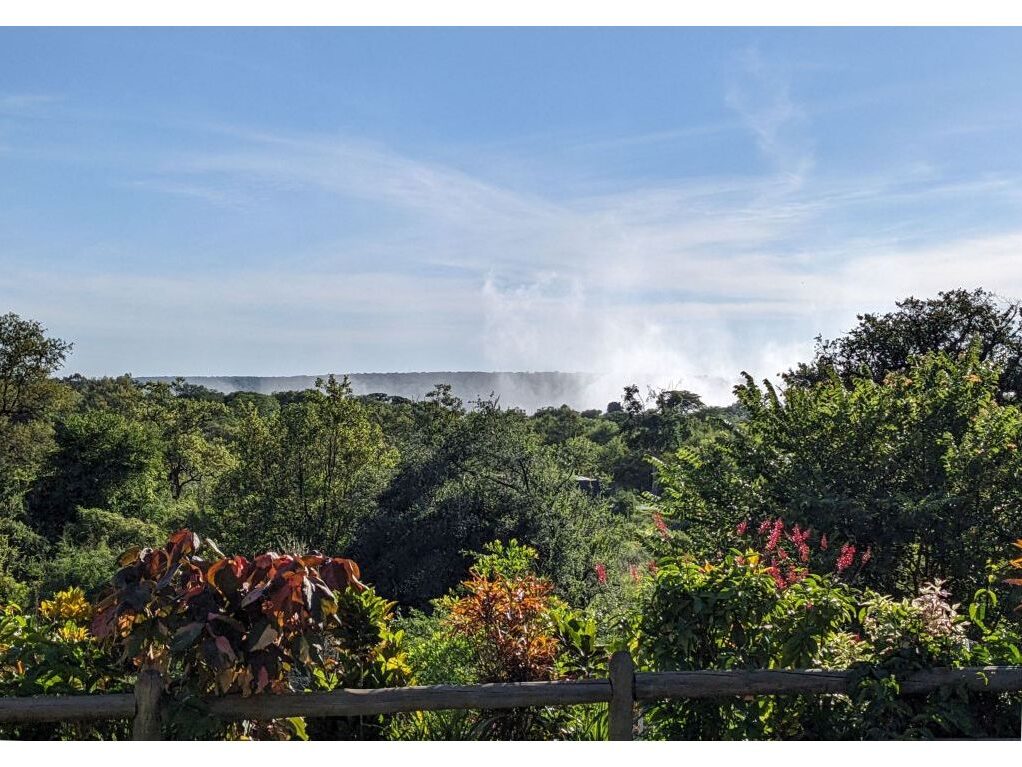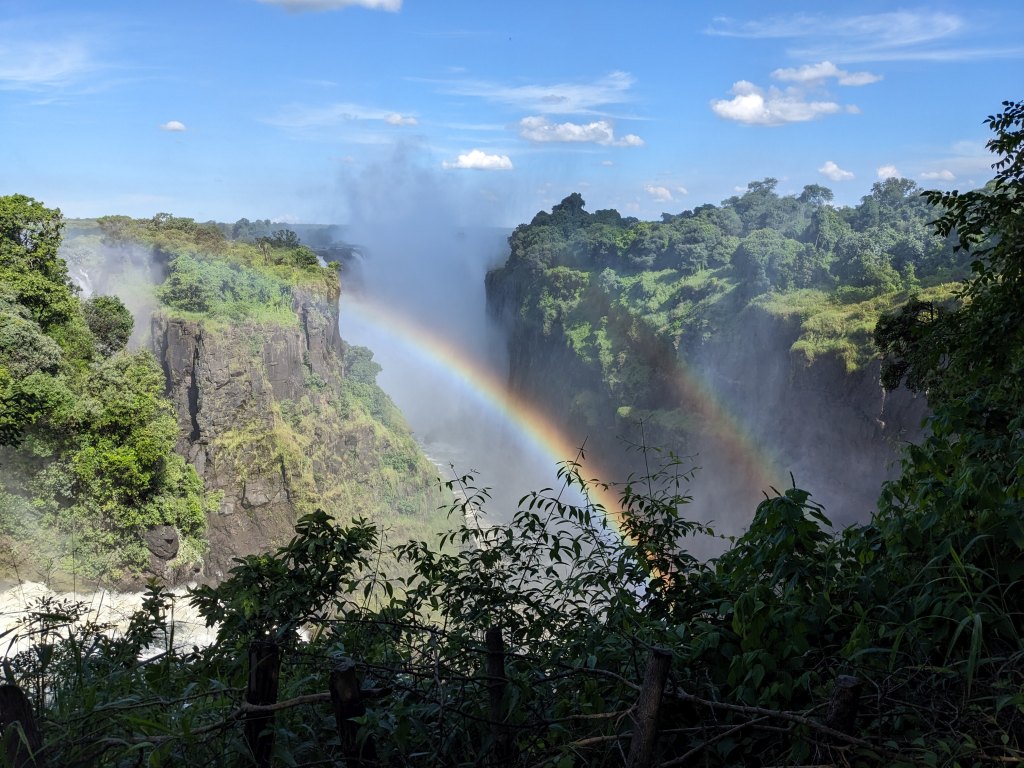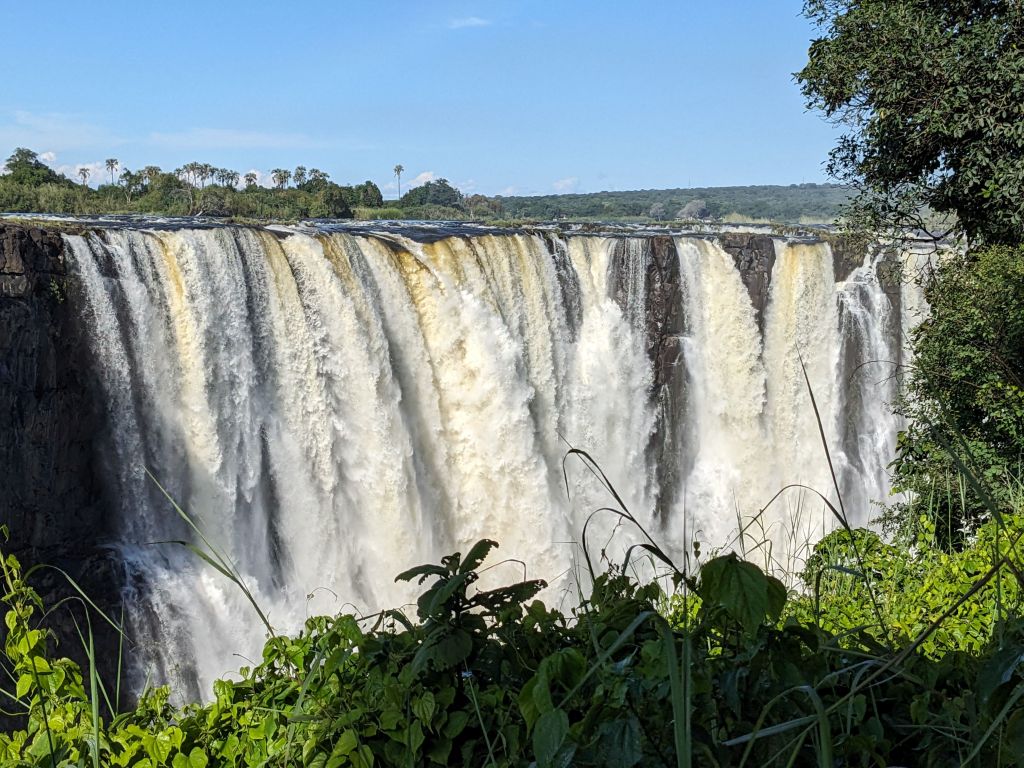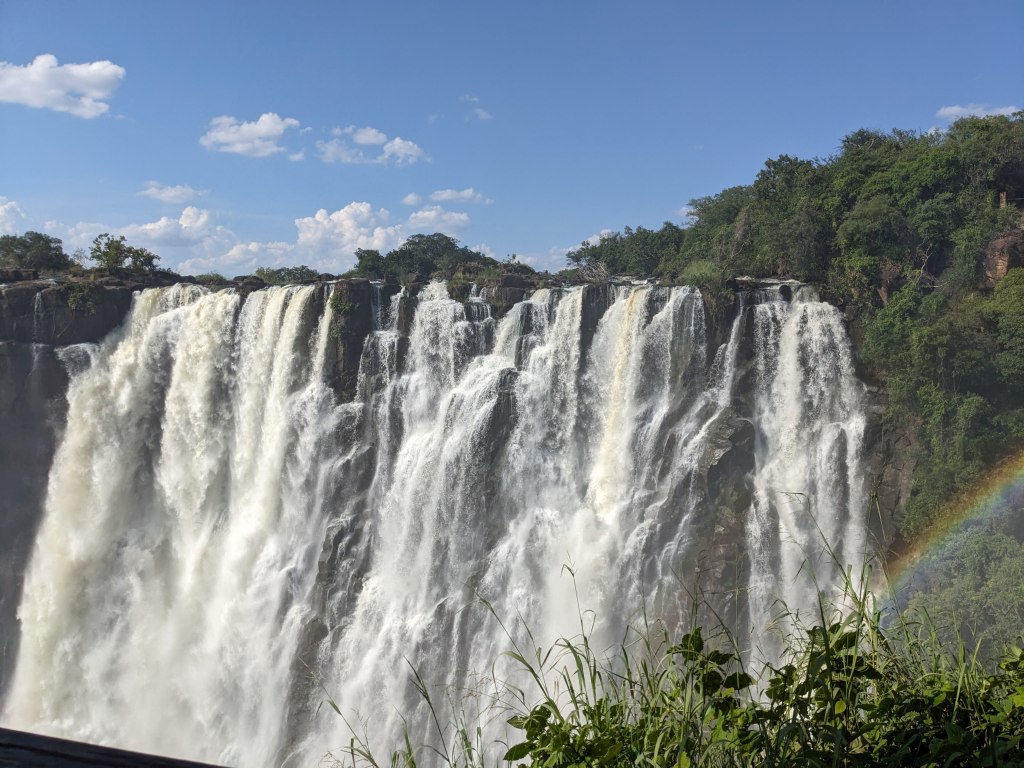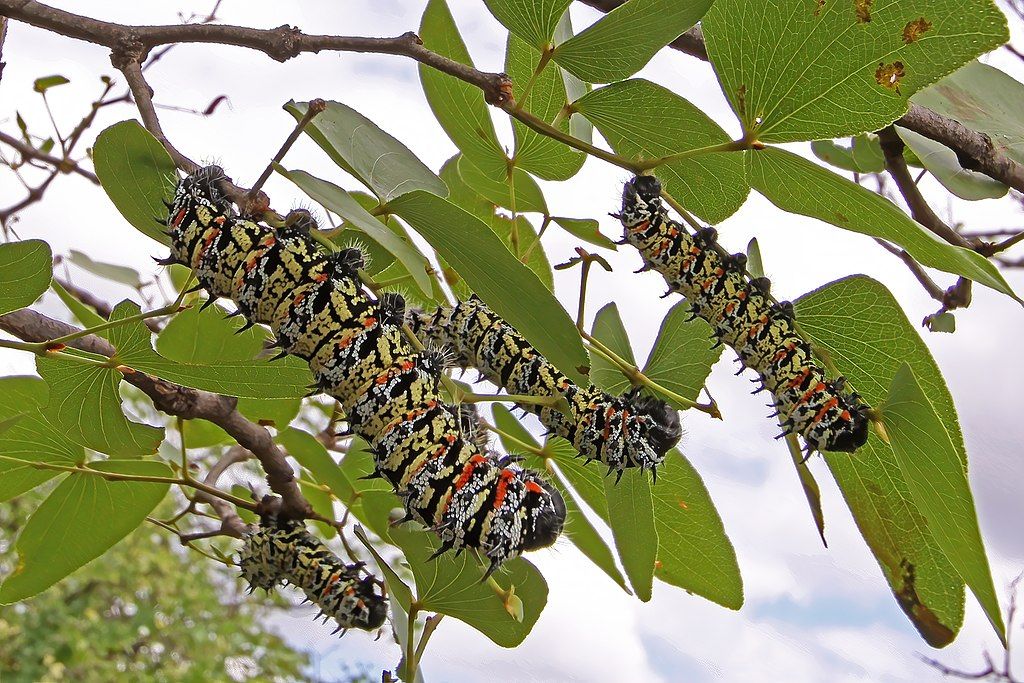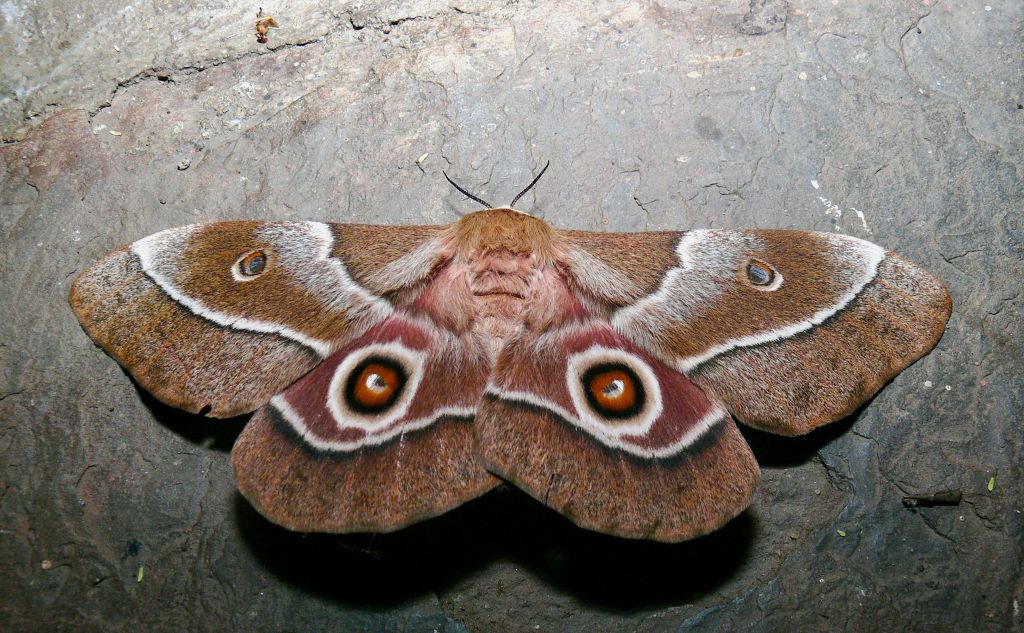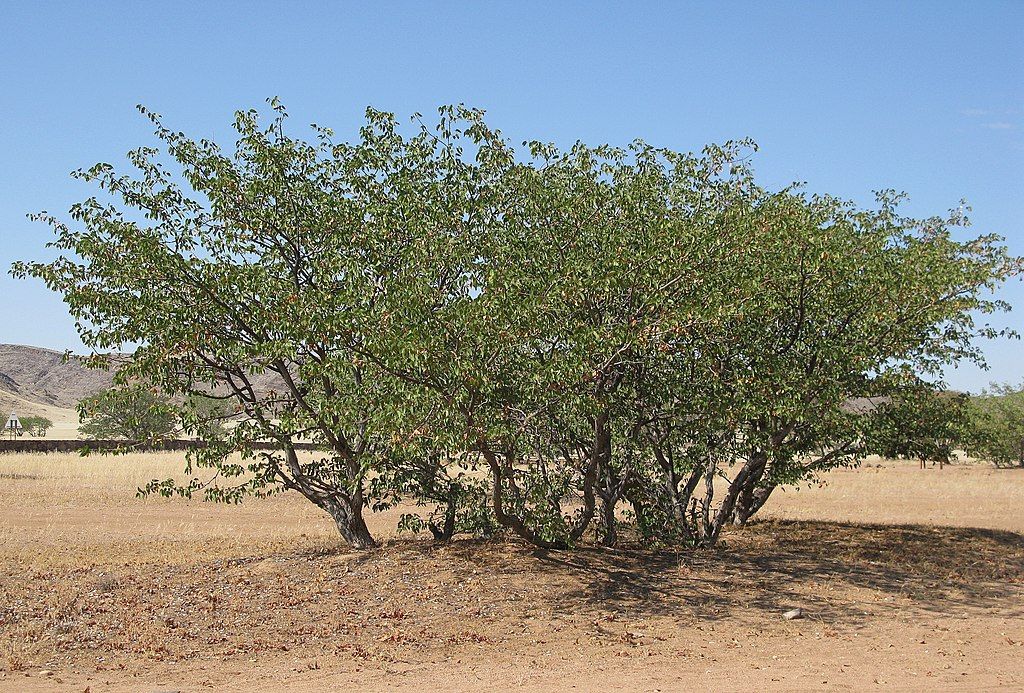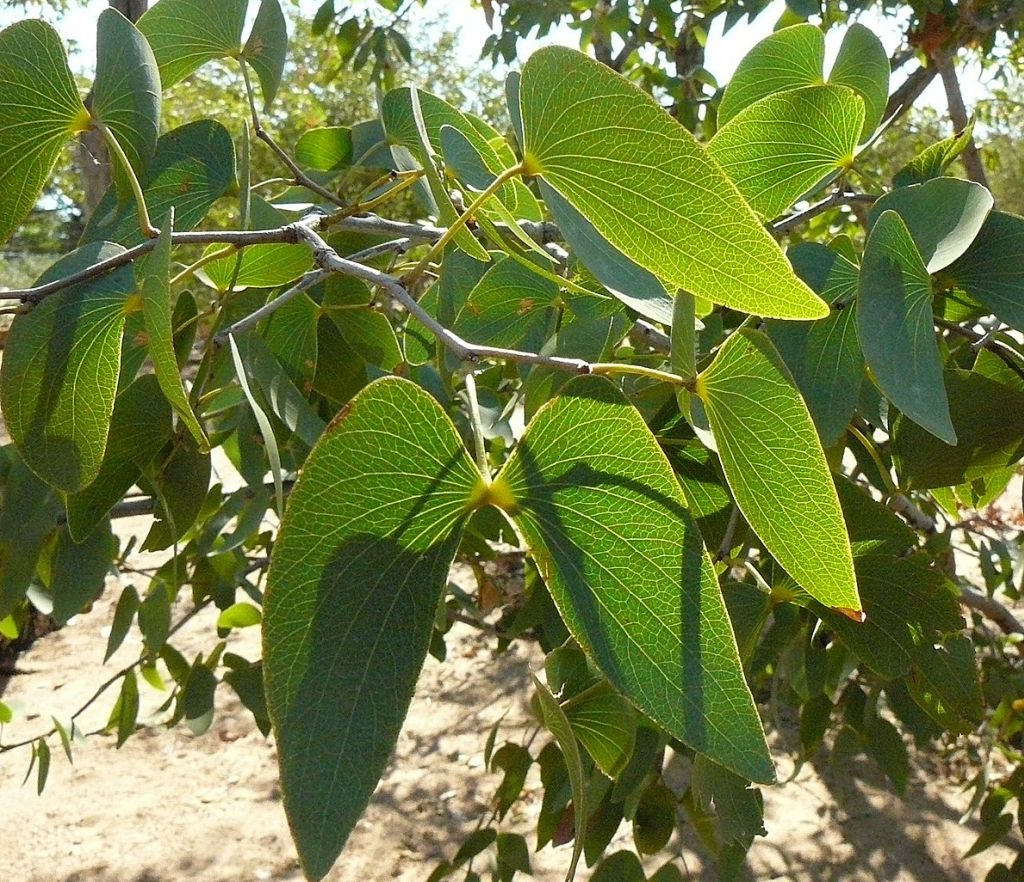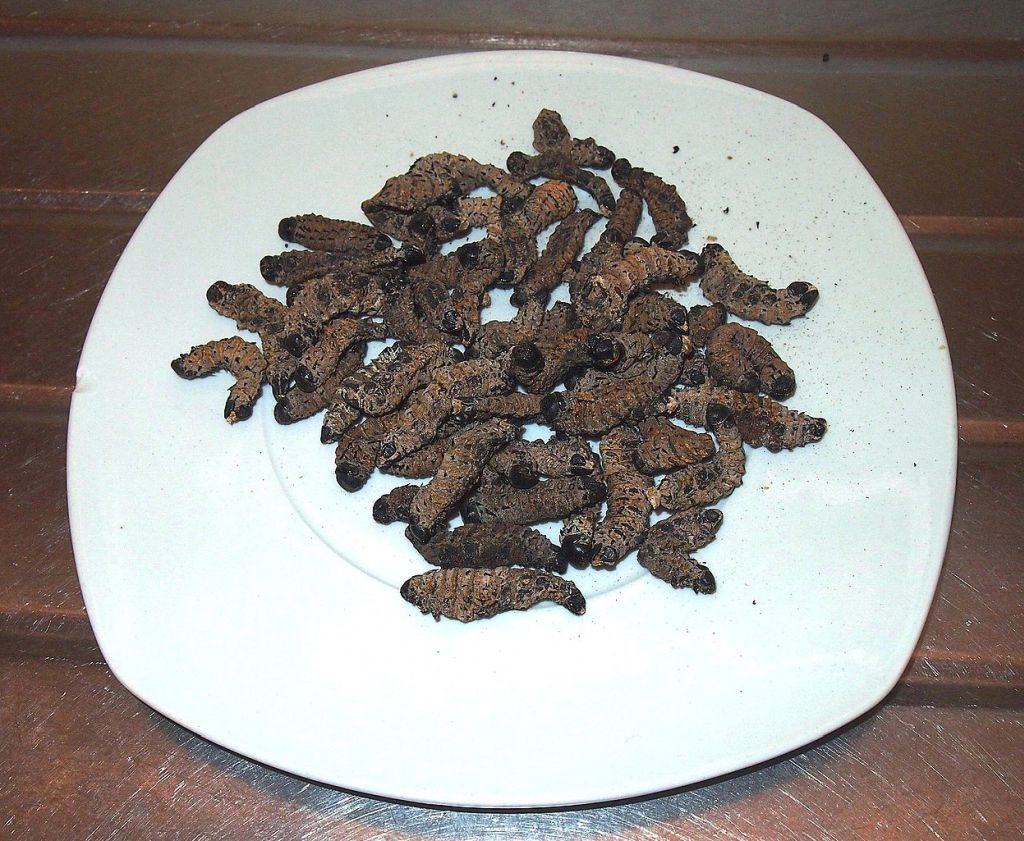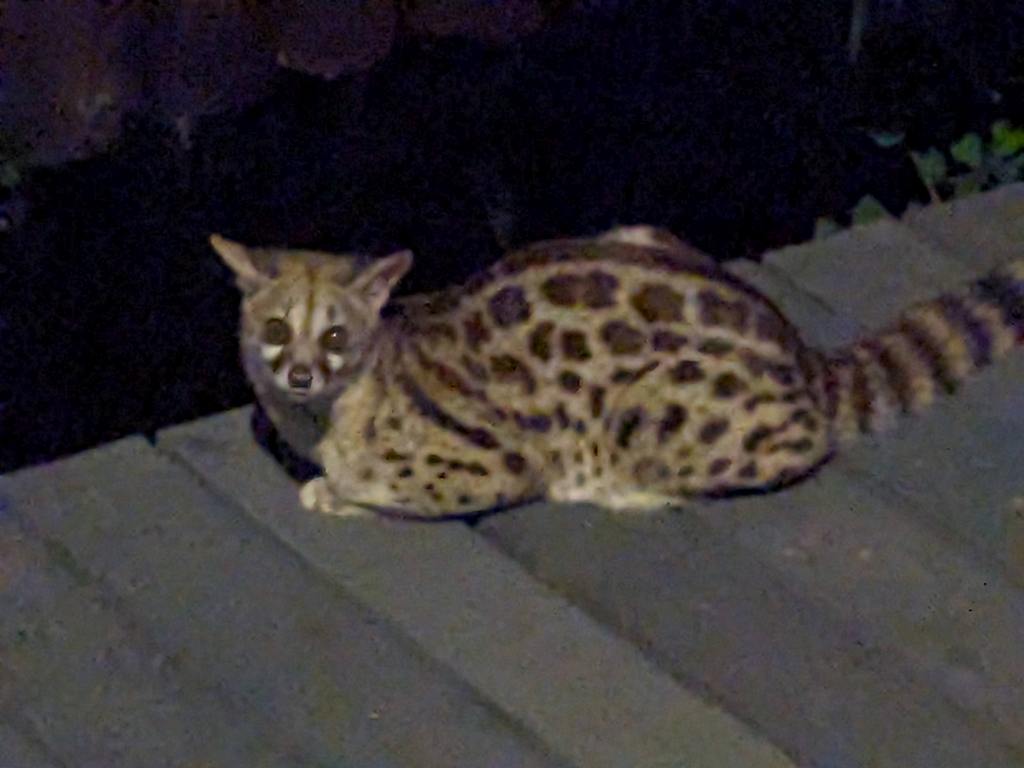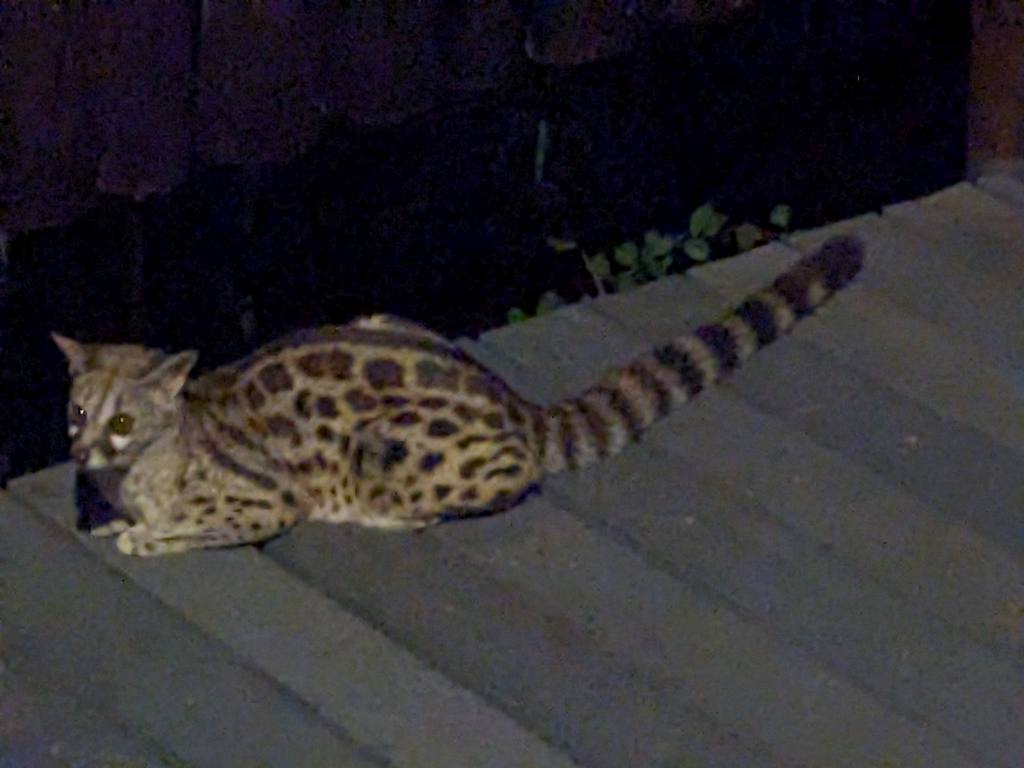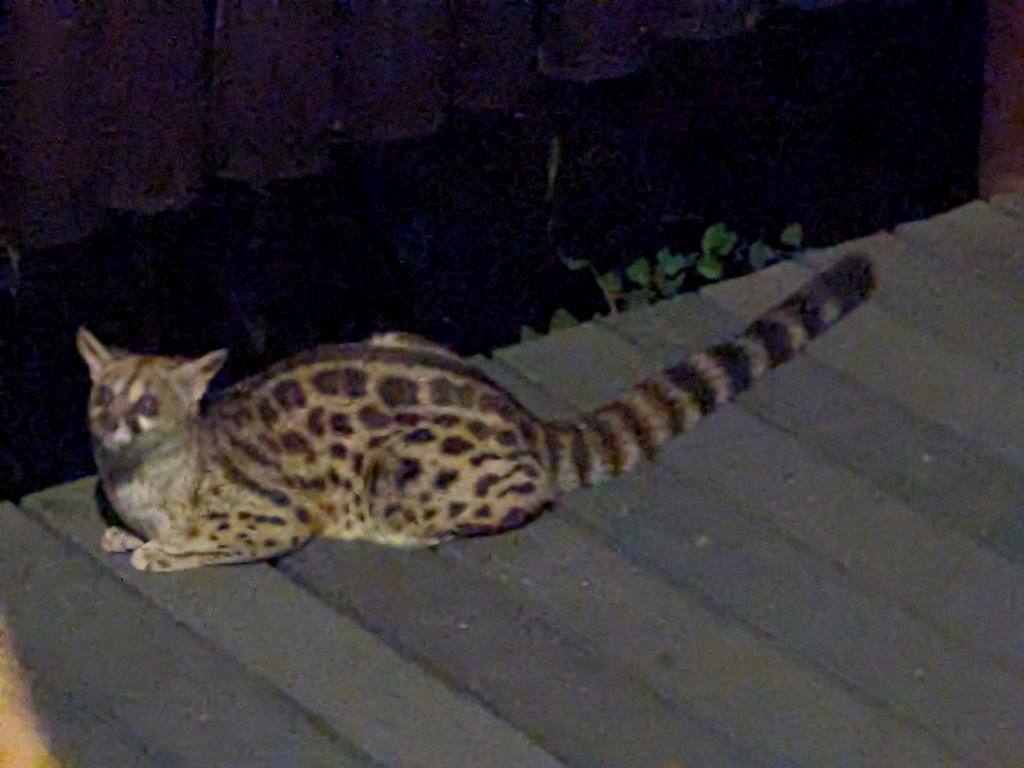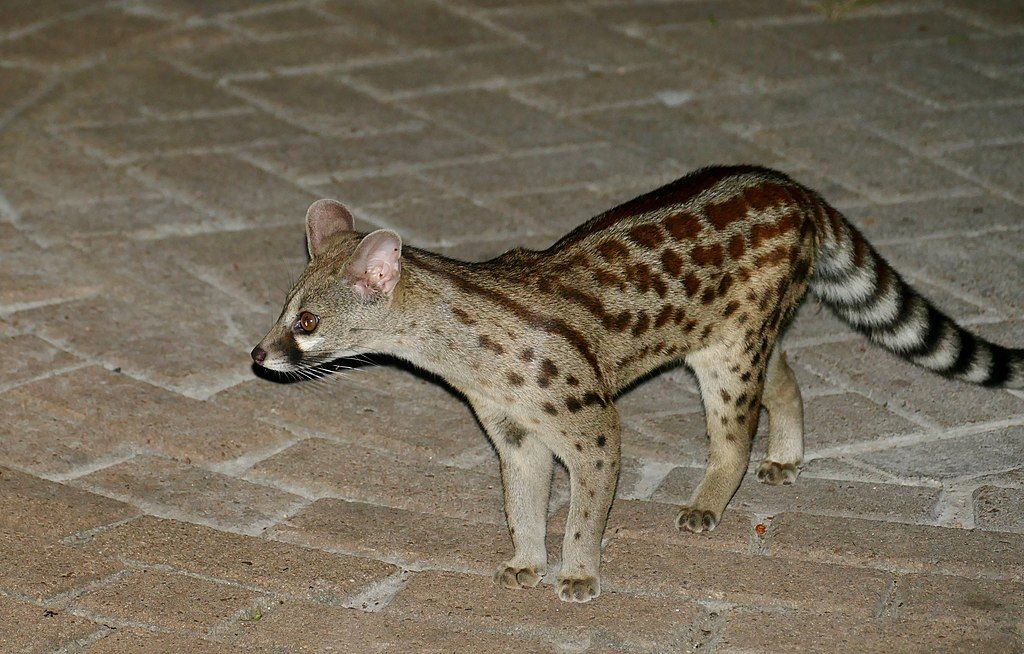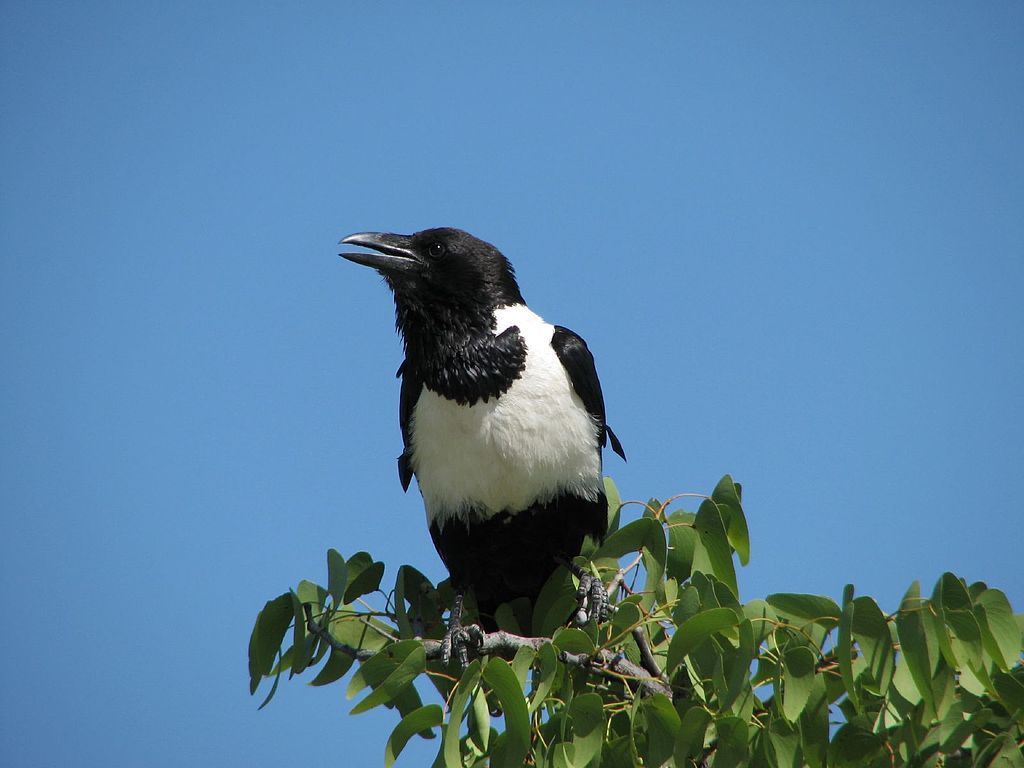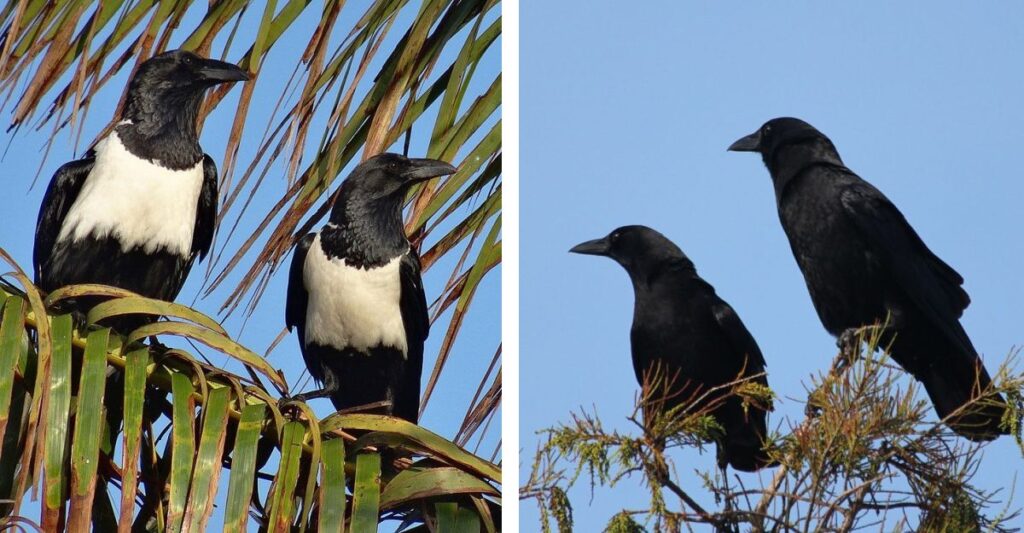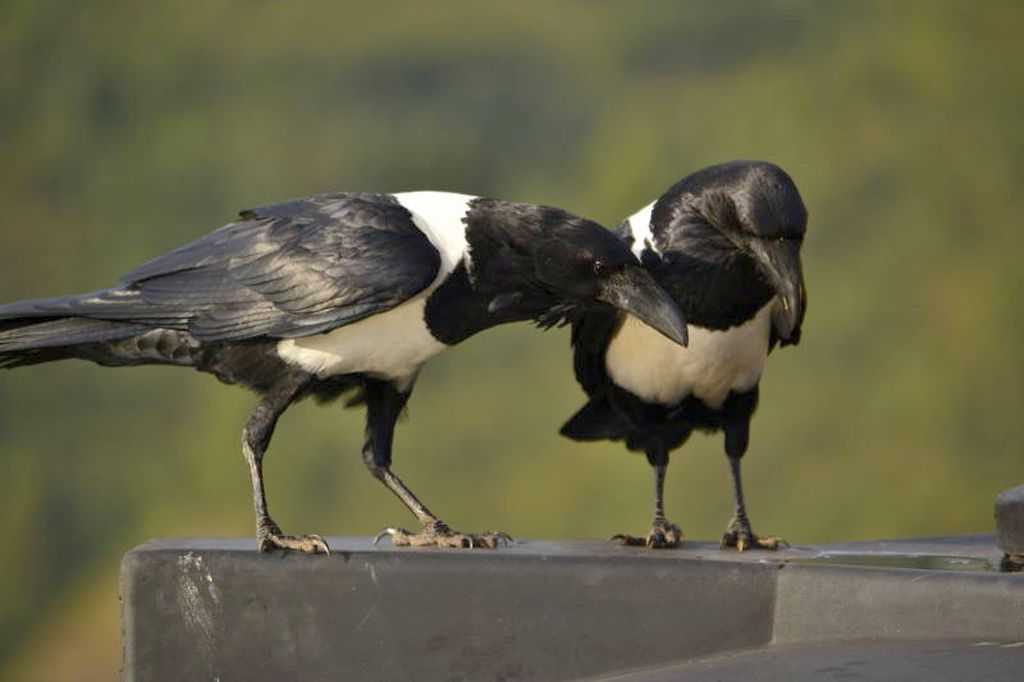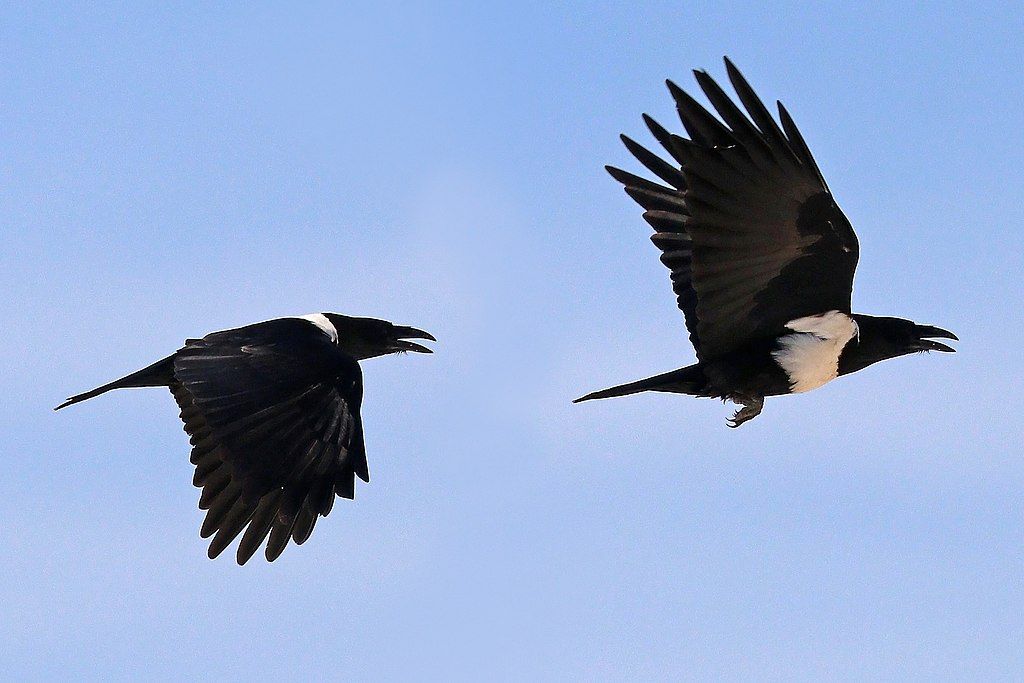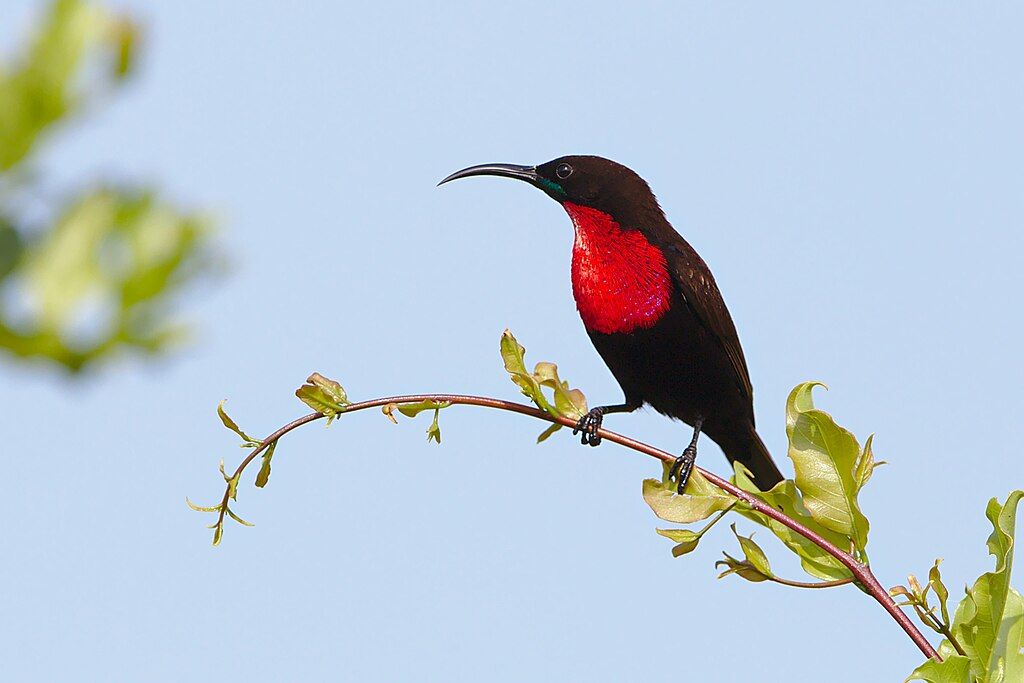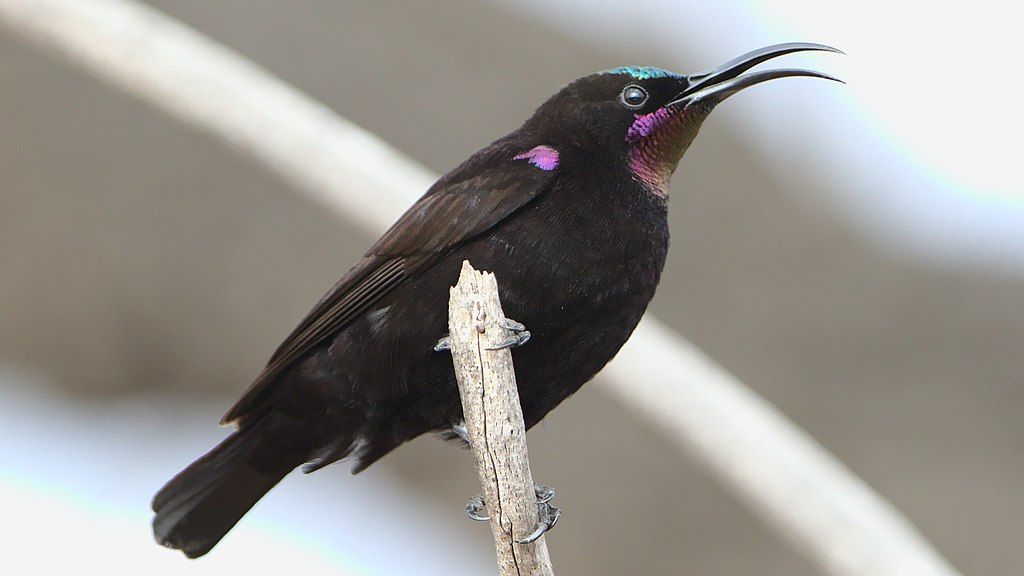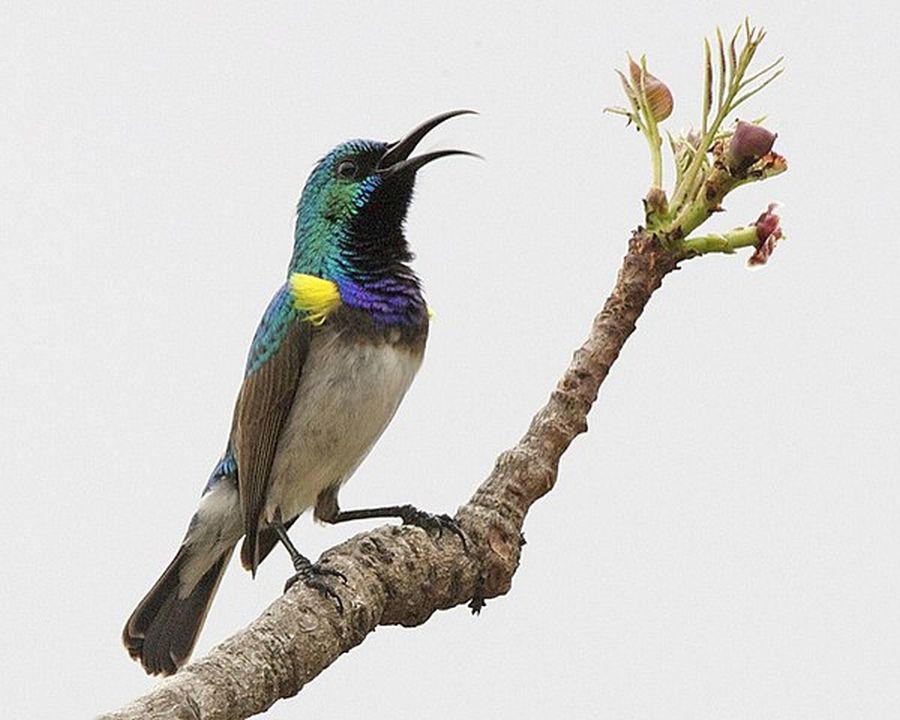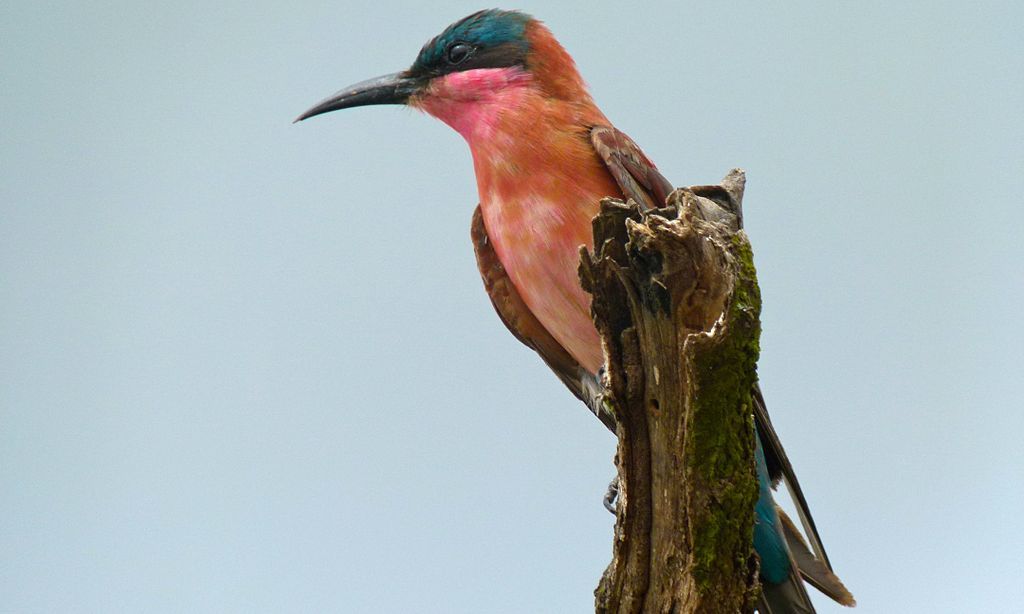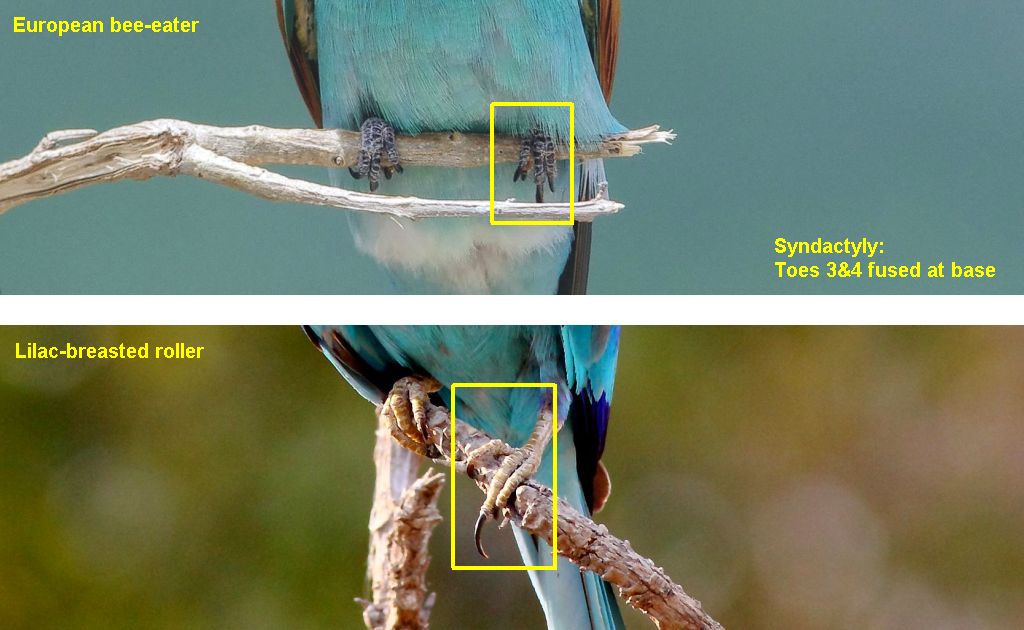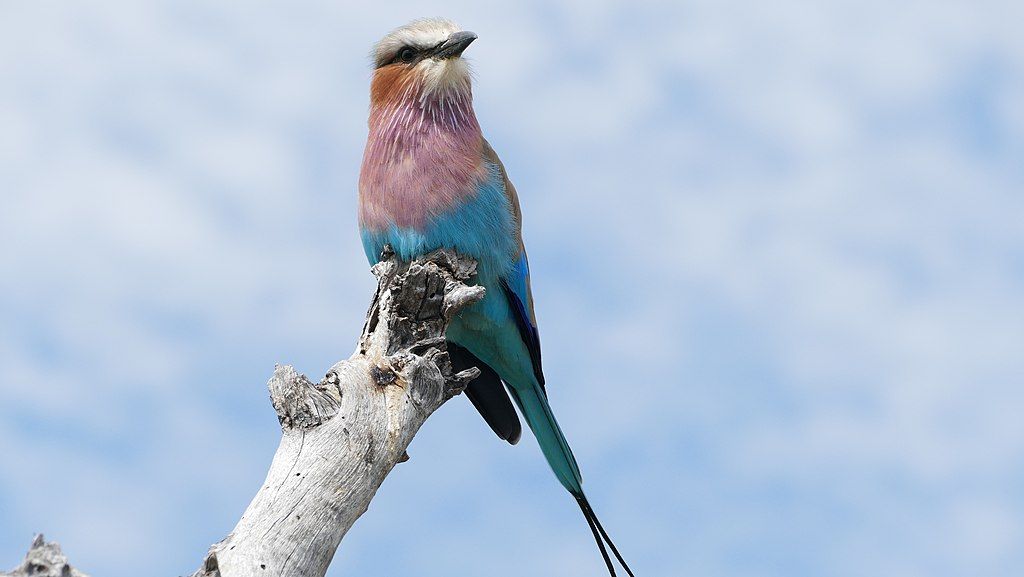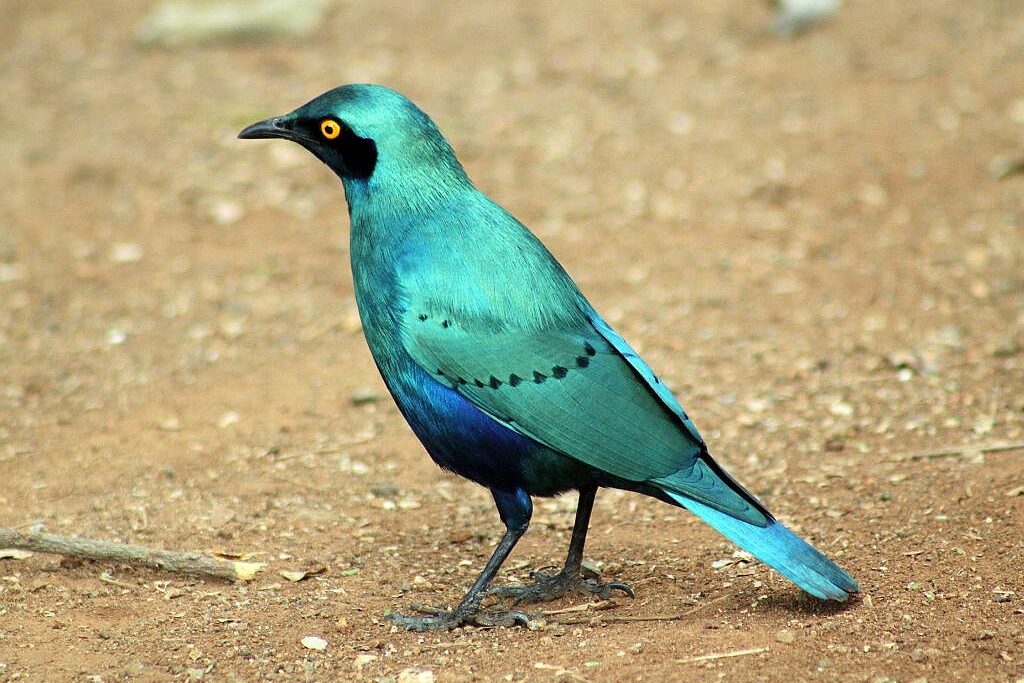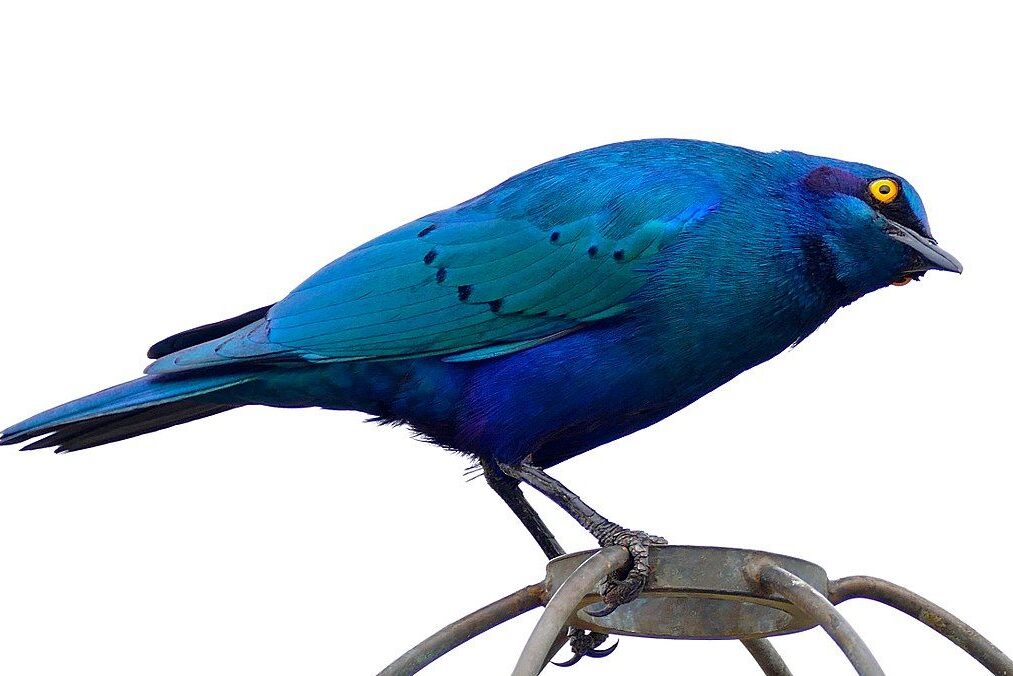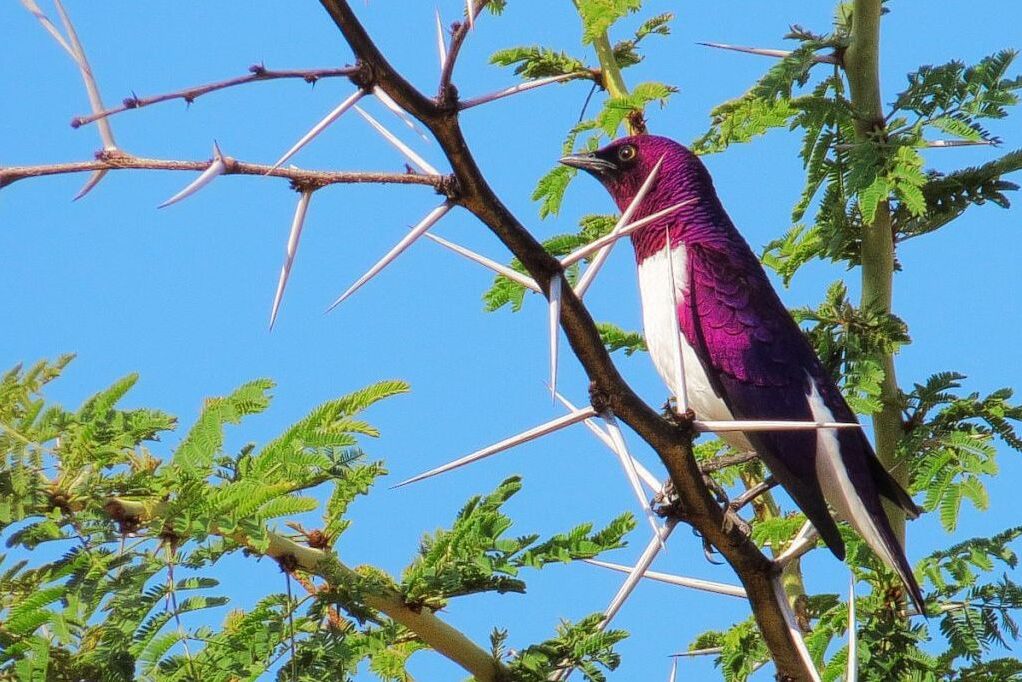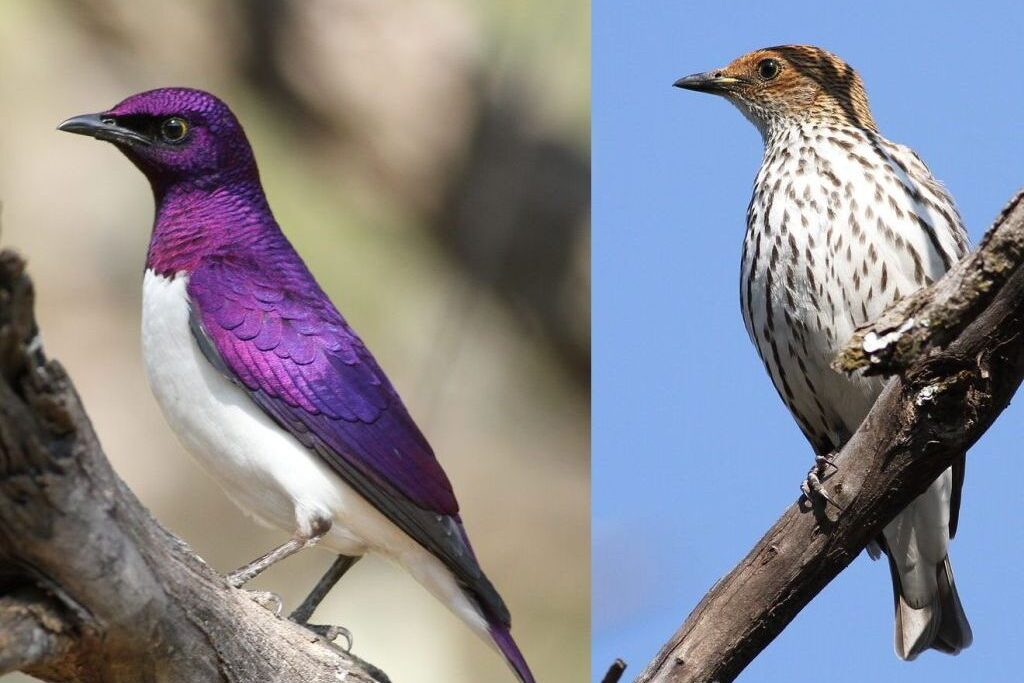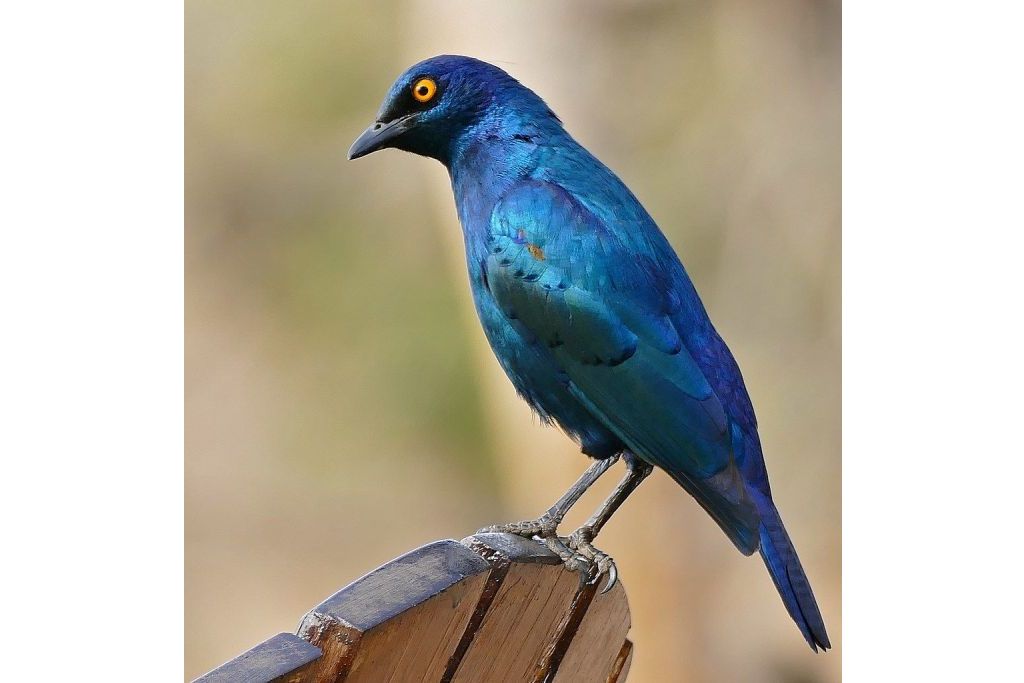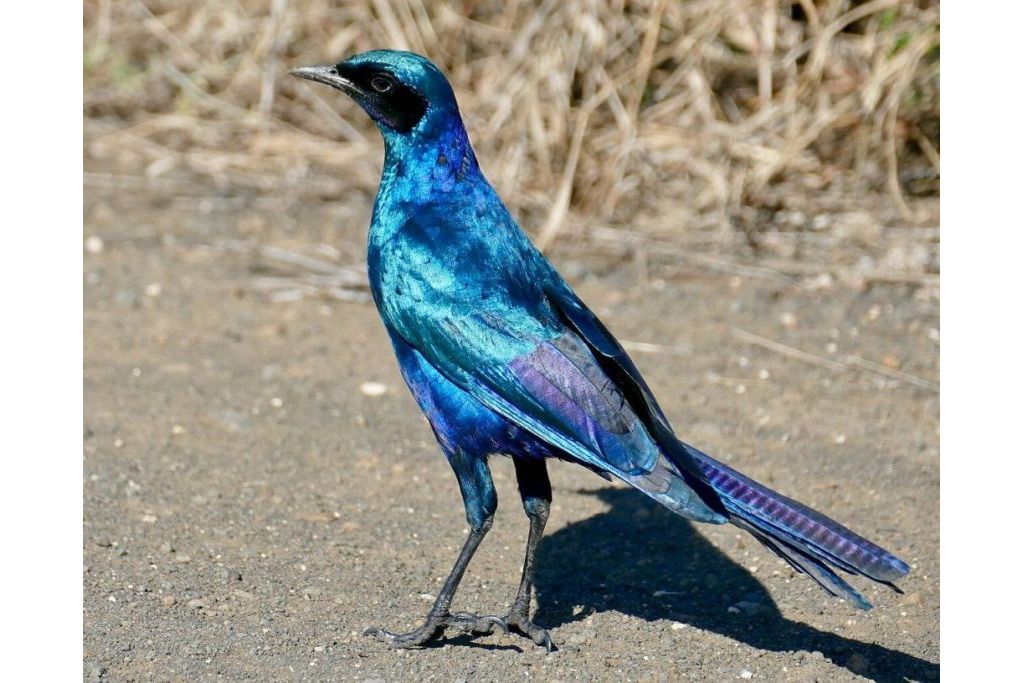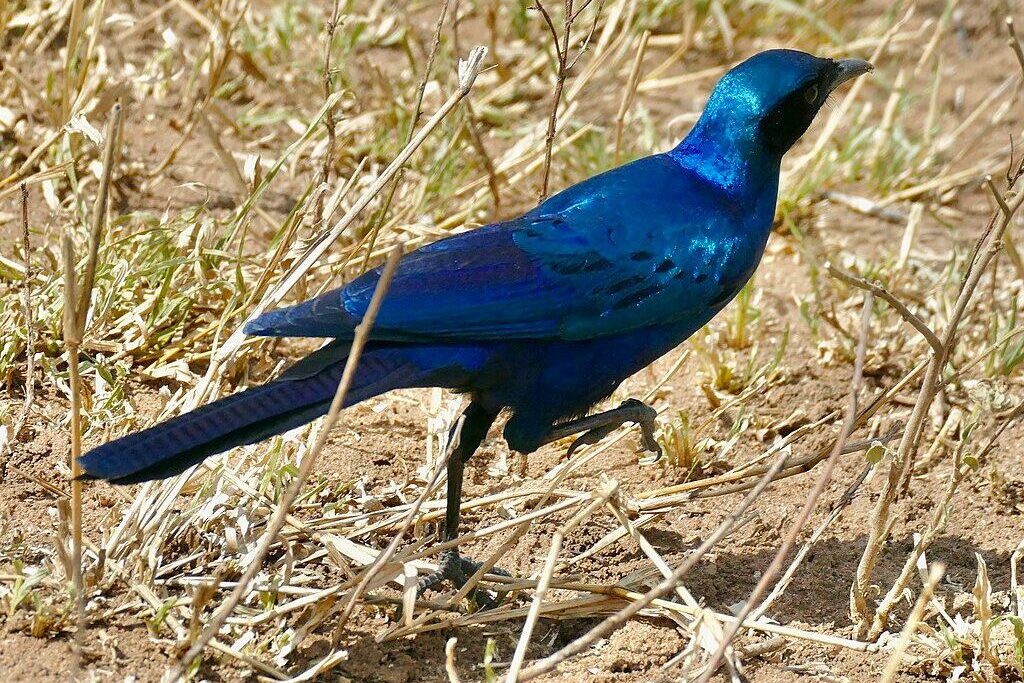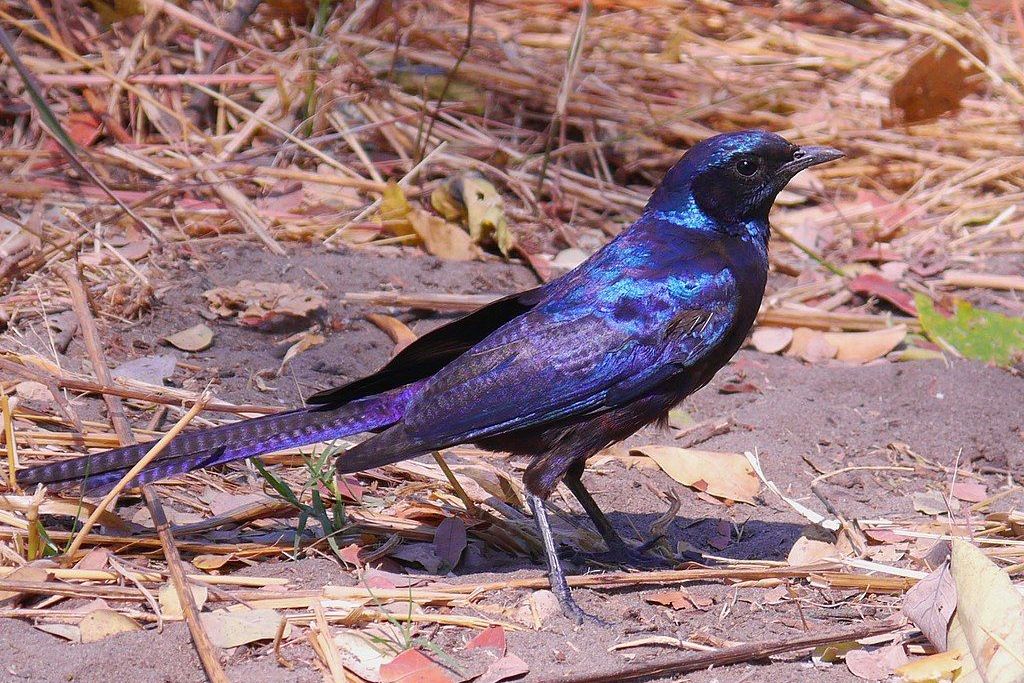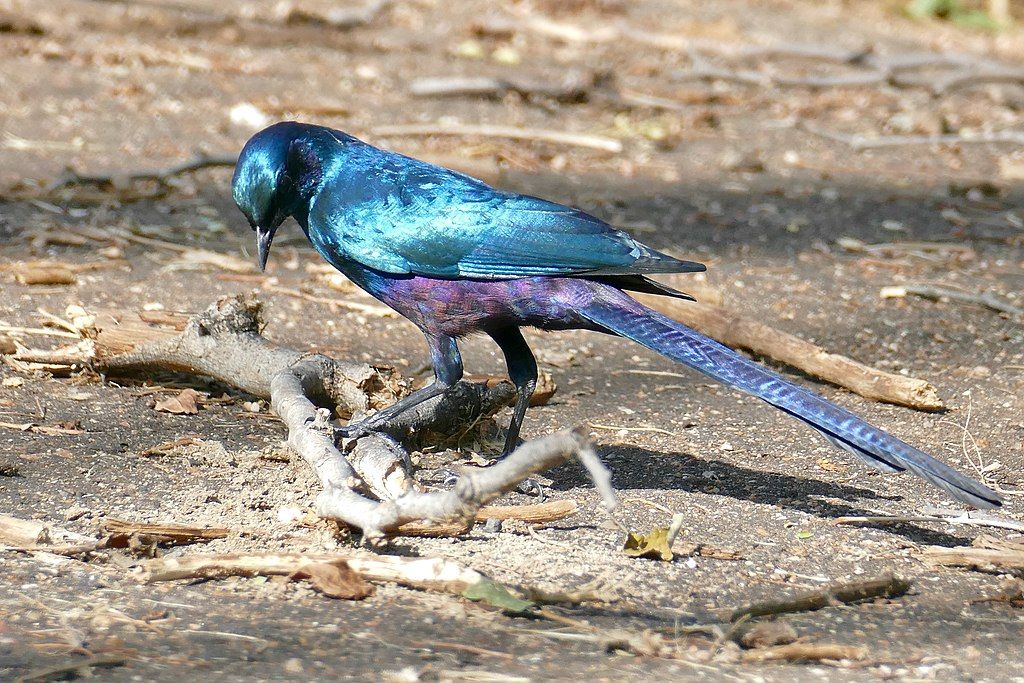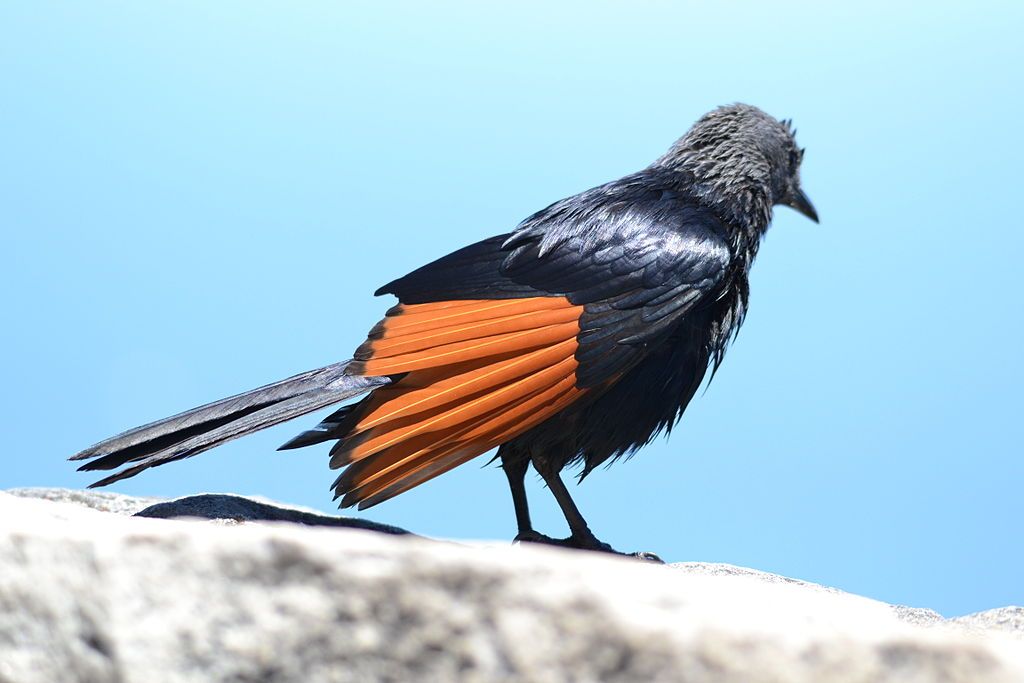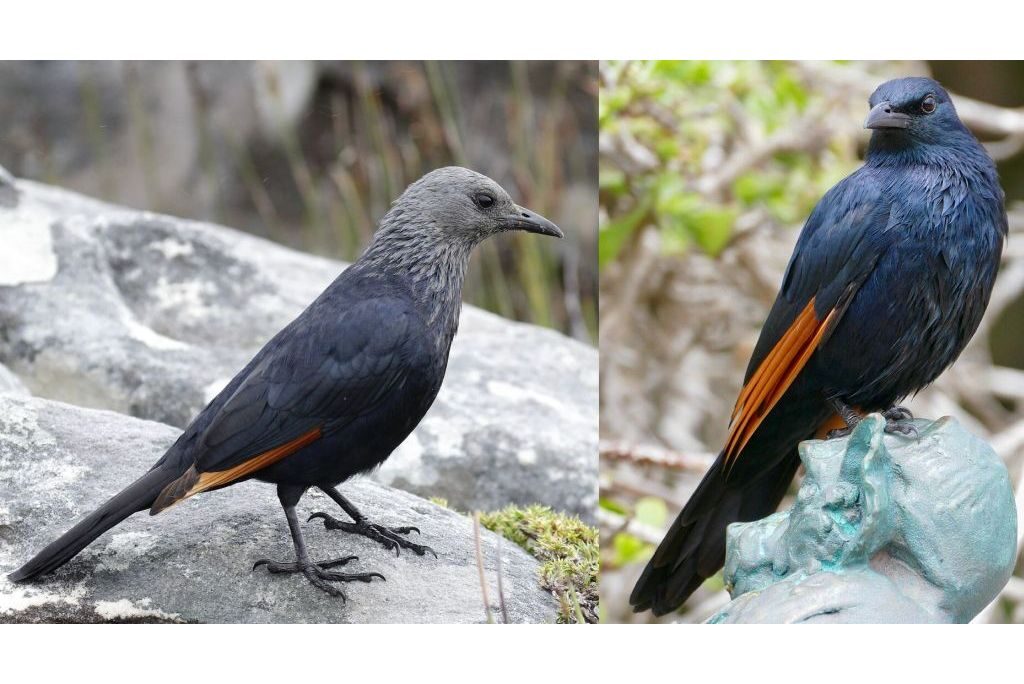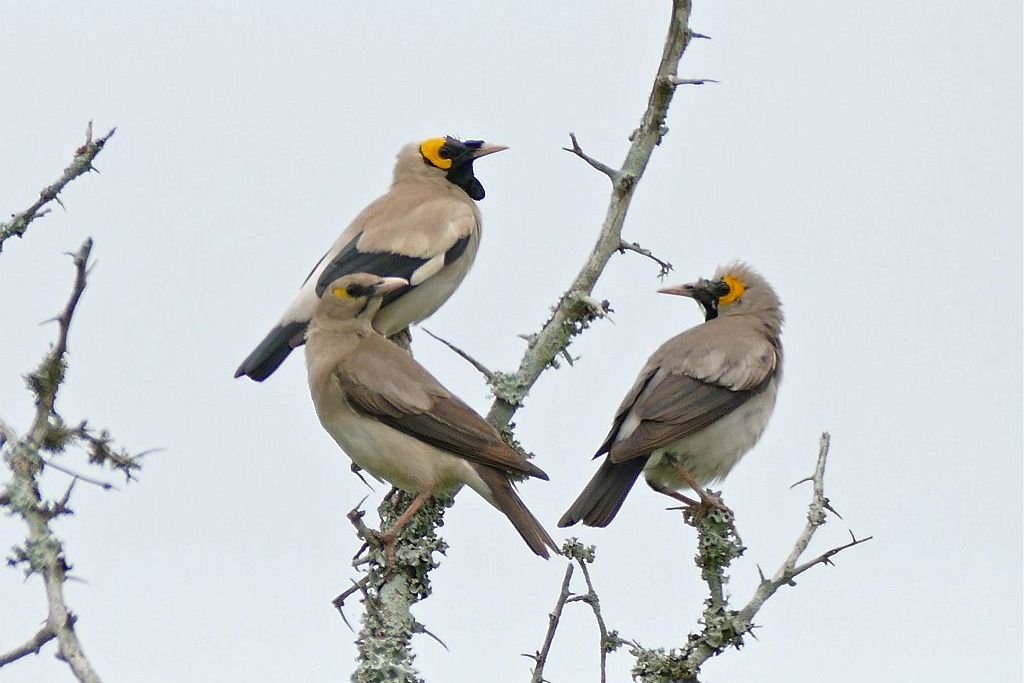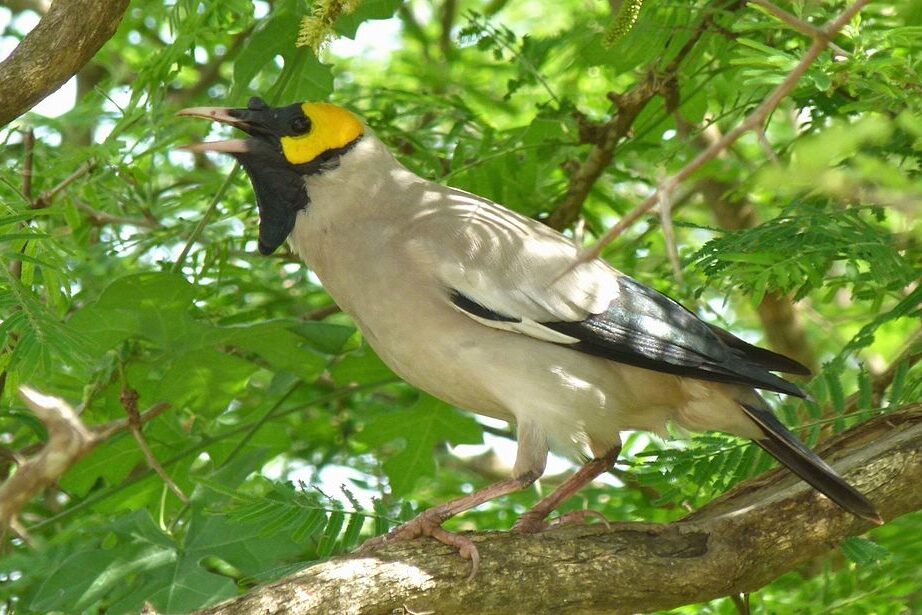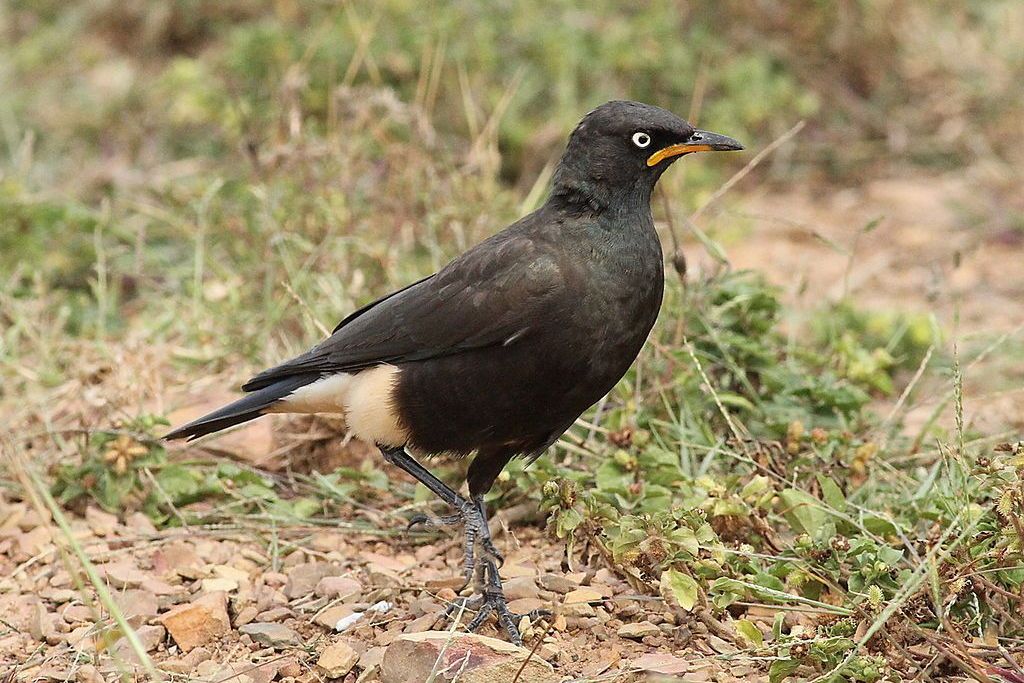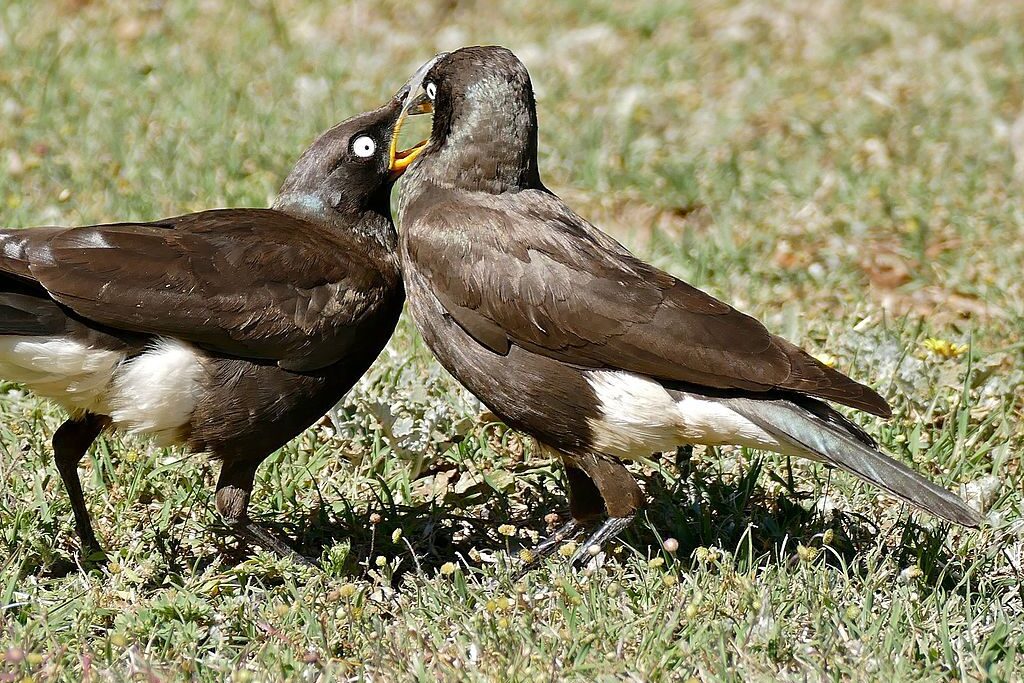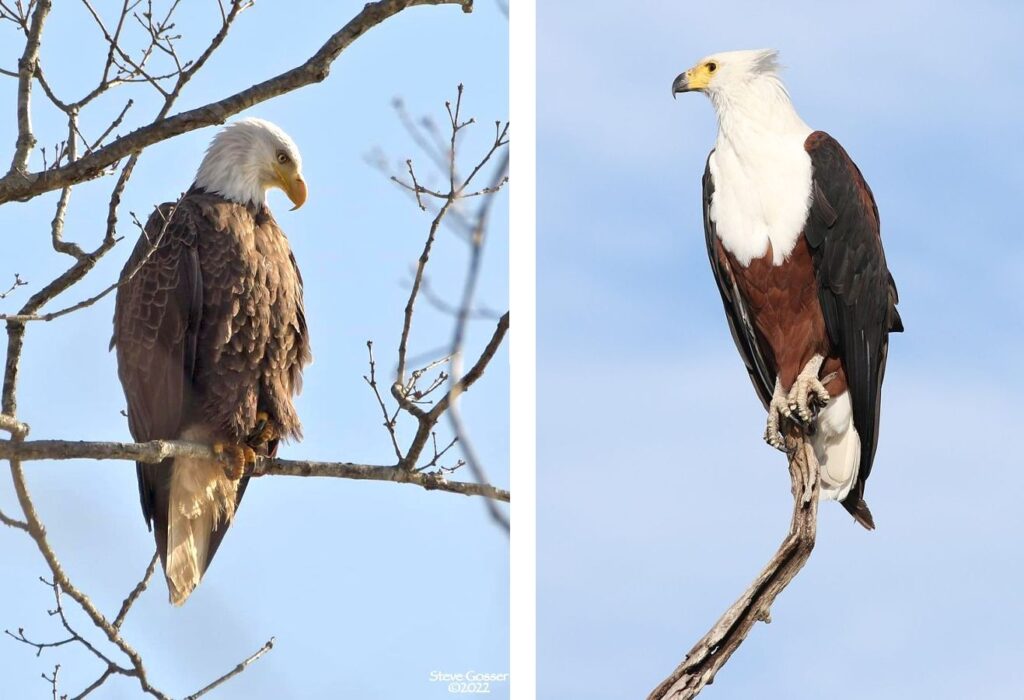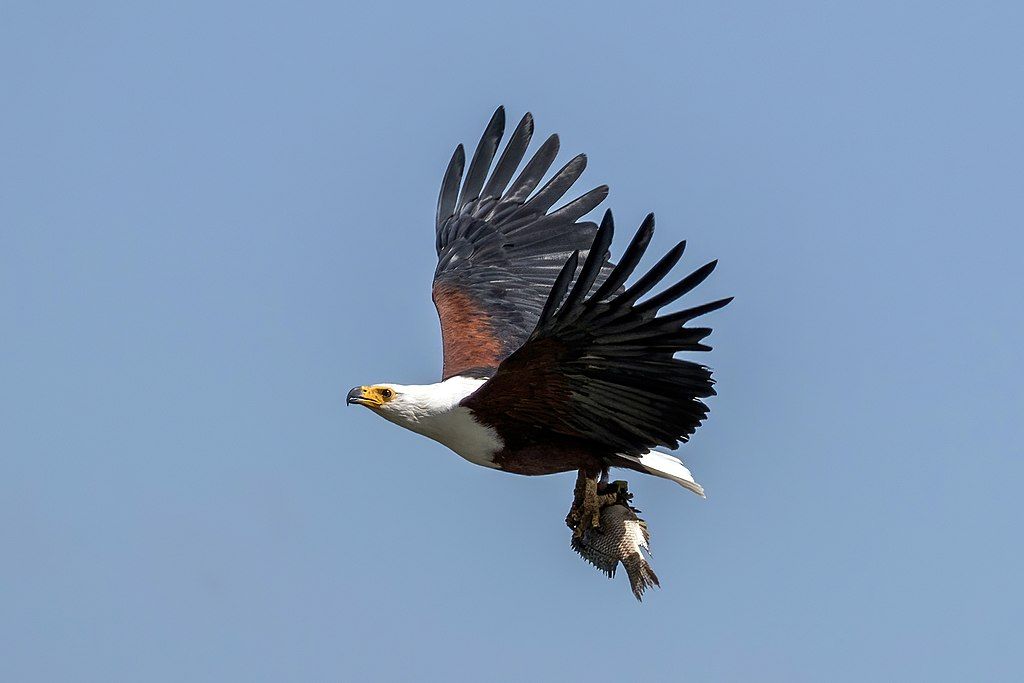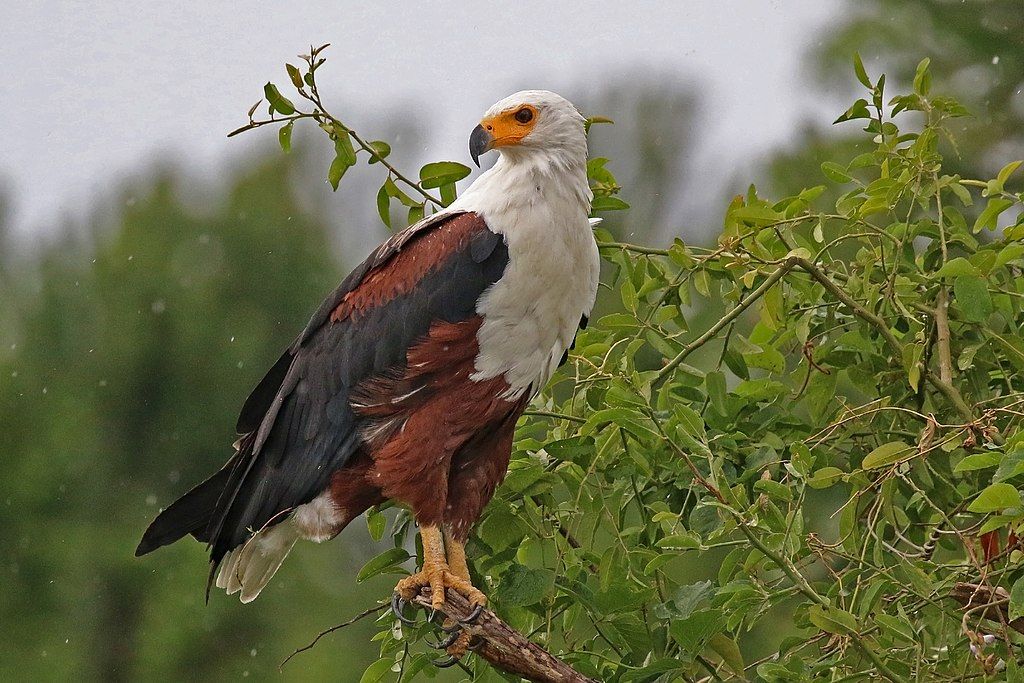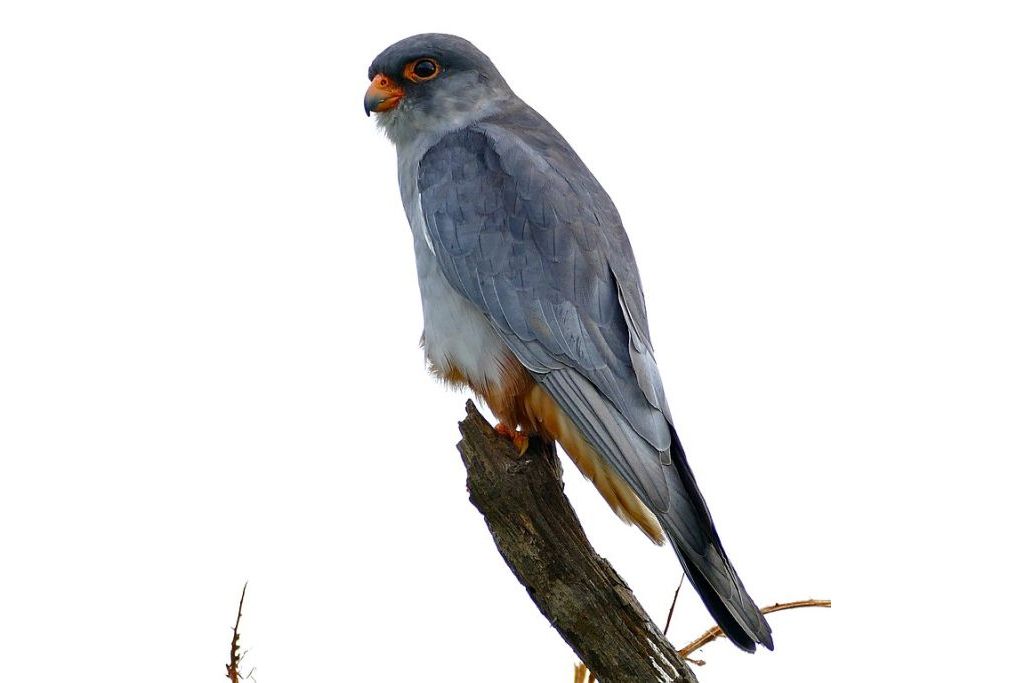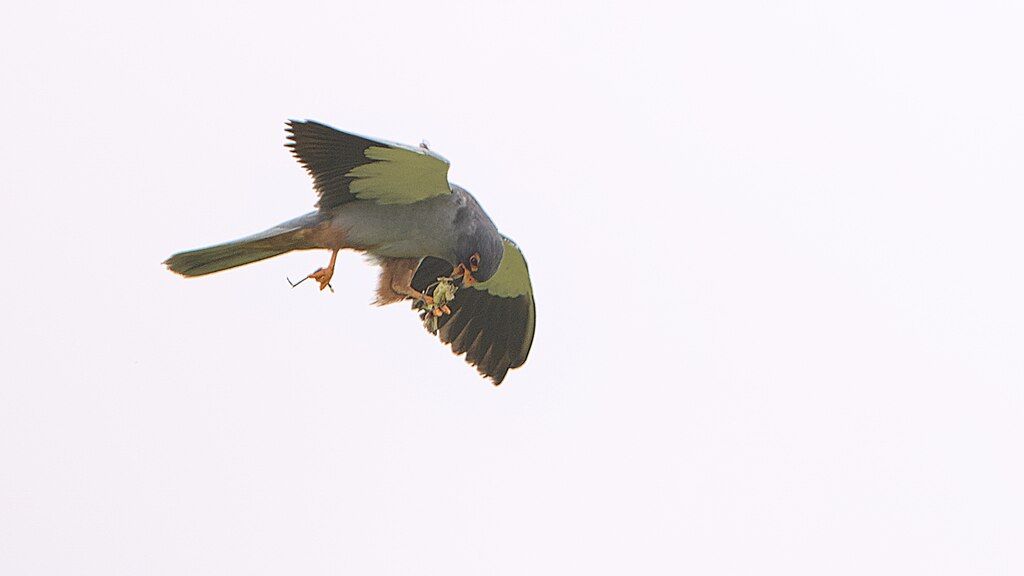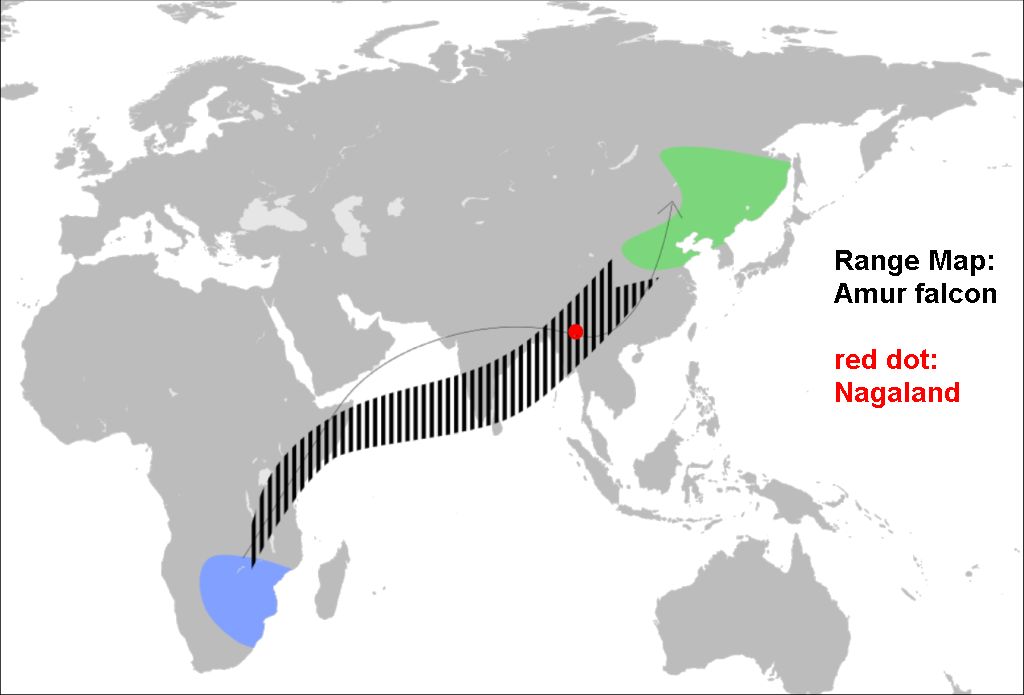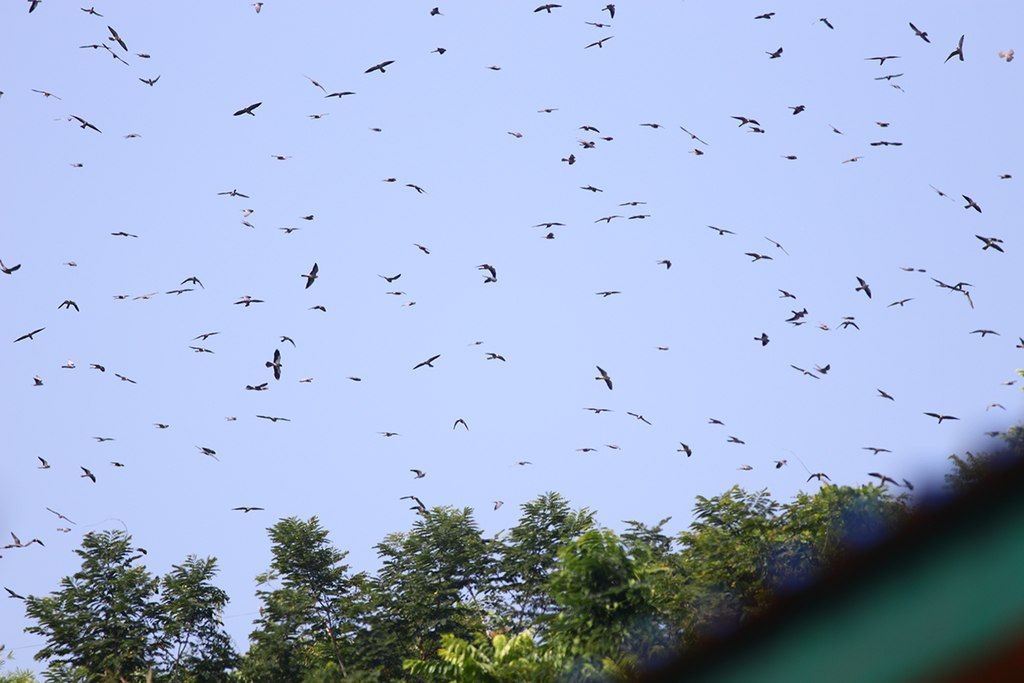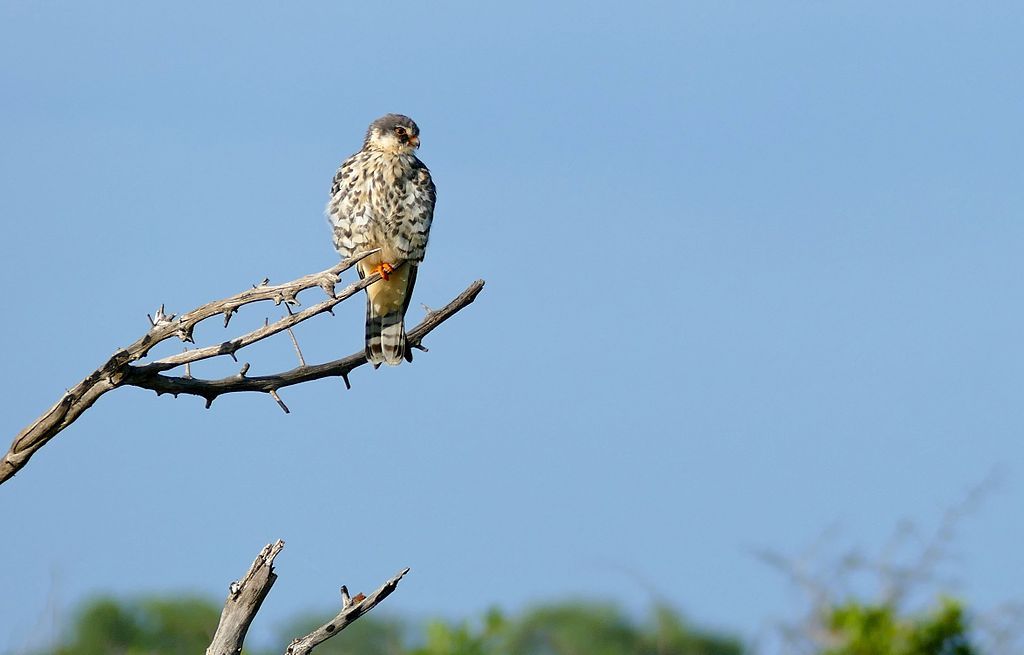11 February 2024
Last month I wrote about Victoria Falls or Mosi-oa-Tunya, before I’d ever seen it. Our Road Scholar Birding Tour visited the area twice: the Zimbabwe side on 22 January, the Zambian side eight days later. While there I learned that the falls really are “the smoke that thunders.”
This marked-up aerial view shows the viewpoints where my photos and videos were taken.

The Devil’s Cataract, on the far left side of the falls, is where the crack begins that will some day become the new fall line.
The Danger Point at the far end of the Zimbabwe side is closer to the falling water. It was very misty, almost otherworldly. We wore raincoats.
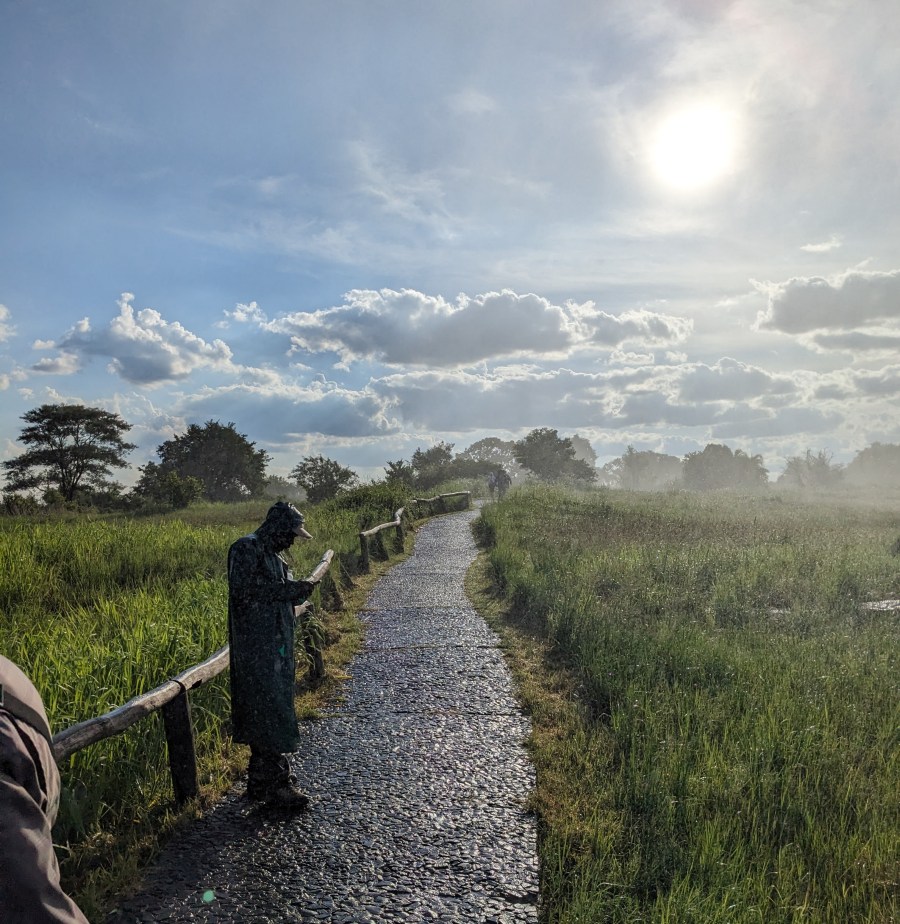
As we left on 22 January we stopped at the overlook for the old Victoria Falls Bridge that spans the outflow of the Zambezi River. People pay to bungee jump 364 feet from the bridge into the canyon. I did not want to watch.

We went there to find Schalow’s turaco (Tauraco schalowi), a fruit-eating African bird that frequents riparian habitats … and we were in luck! One flew by and landed near us. These eBird photos show its beautiful colors.
On 30 January we returned to Victoria Falls on the Zambia side where the water was even closer and more dramatic. Those who want to walk to Livingstone Island or the Devil’s Pool during low water start their journey on this side, walking 1 km (more than 2/3 mile).
No way! Look how fast the water rushes toward the cliff …
… and falls down the other side.
We crossed the Knife’s Edge Bridge …
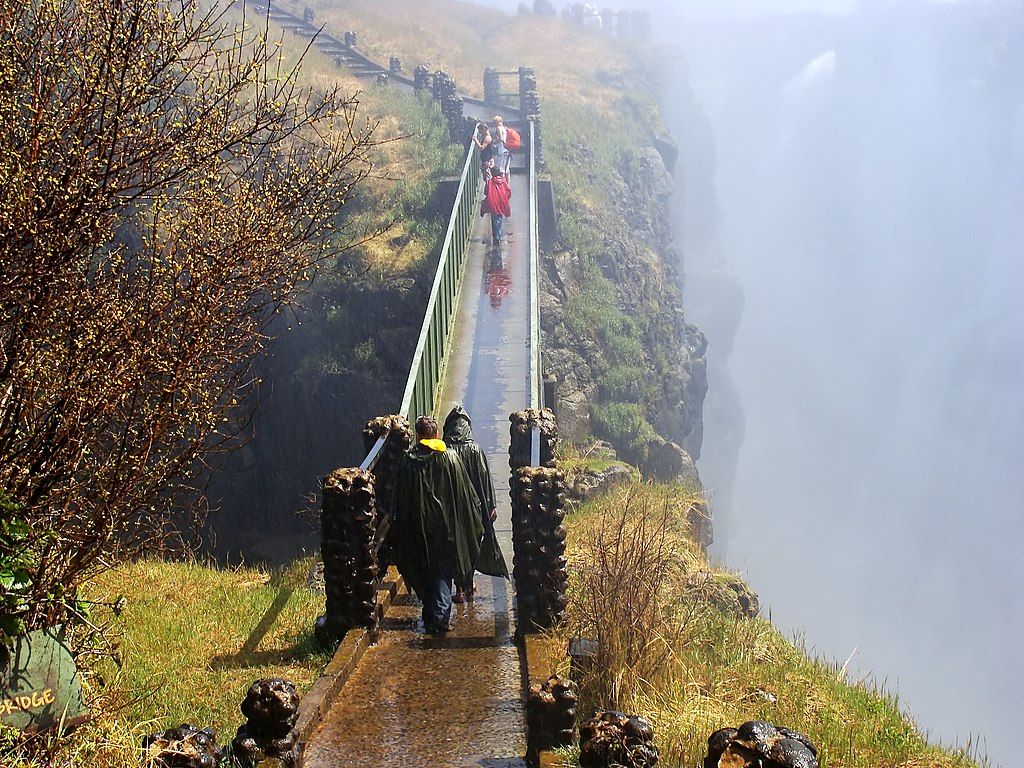
… to complete our tour of The Smoke That Thunders.
(credits are in the captions)
